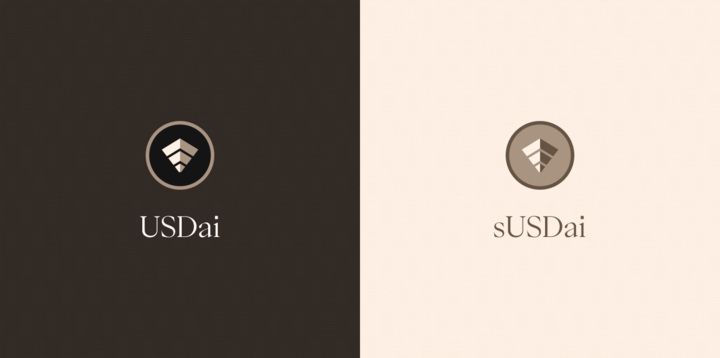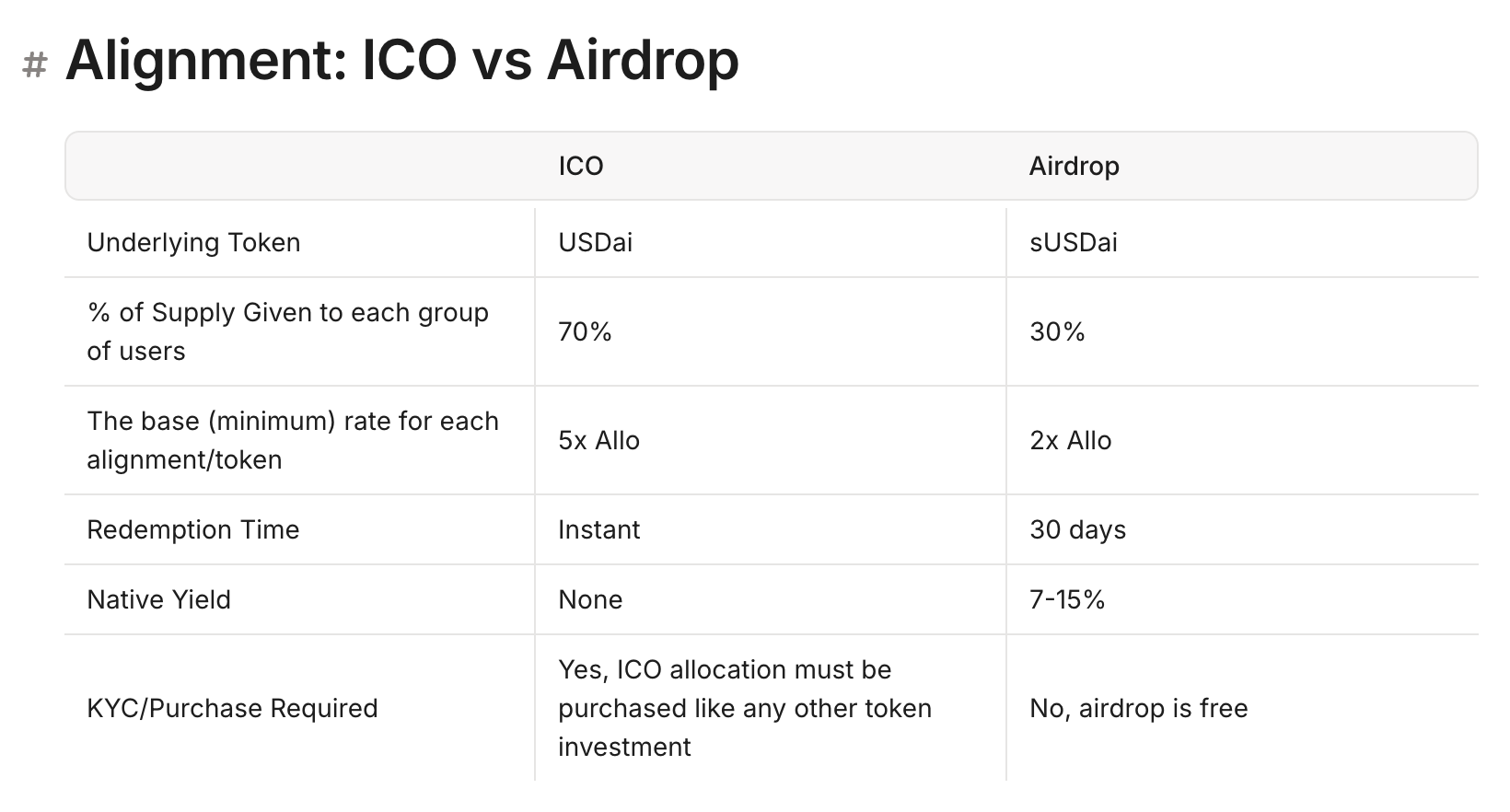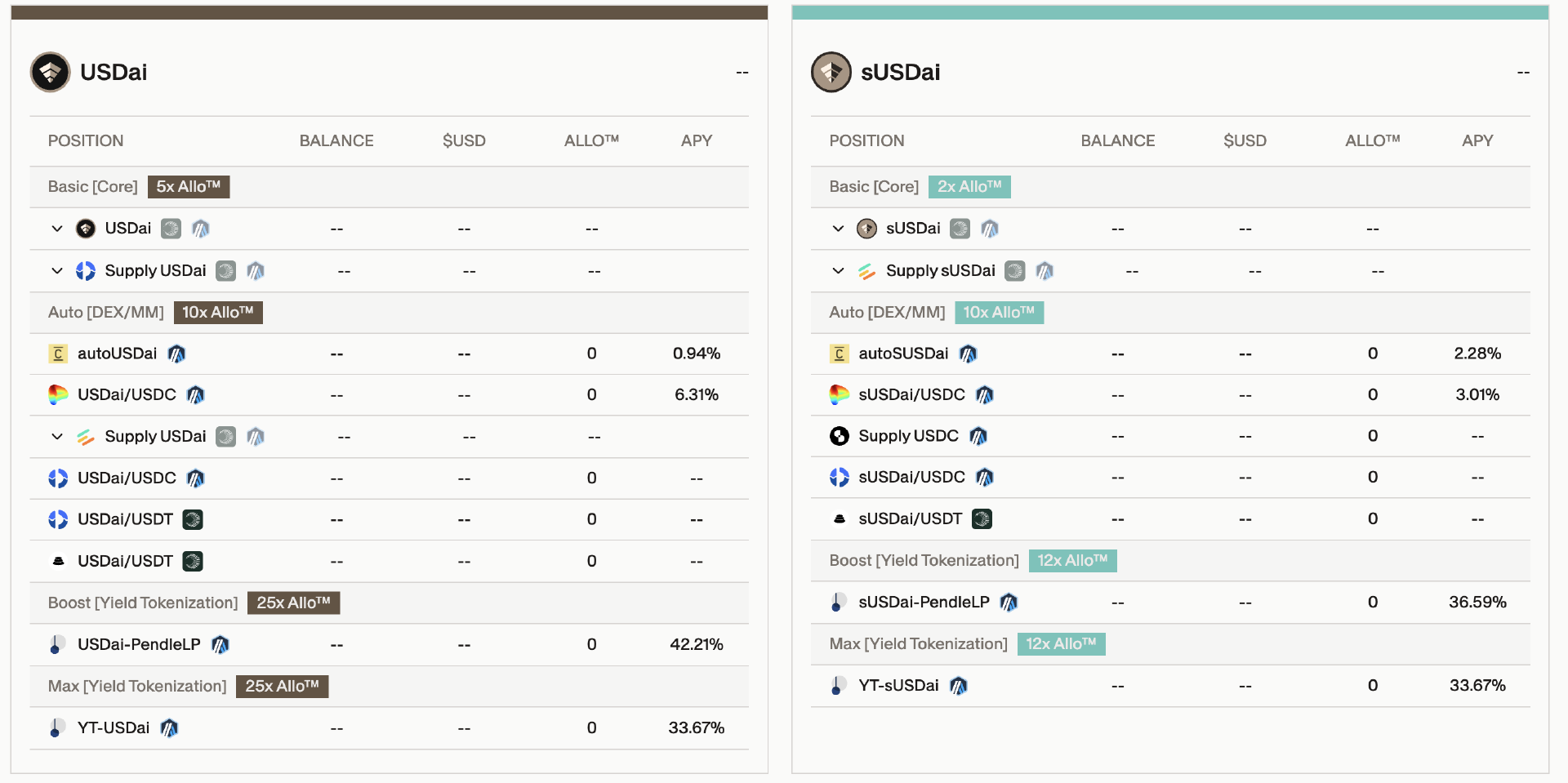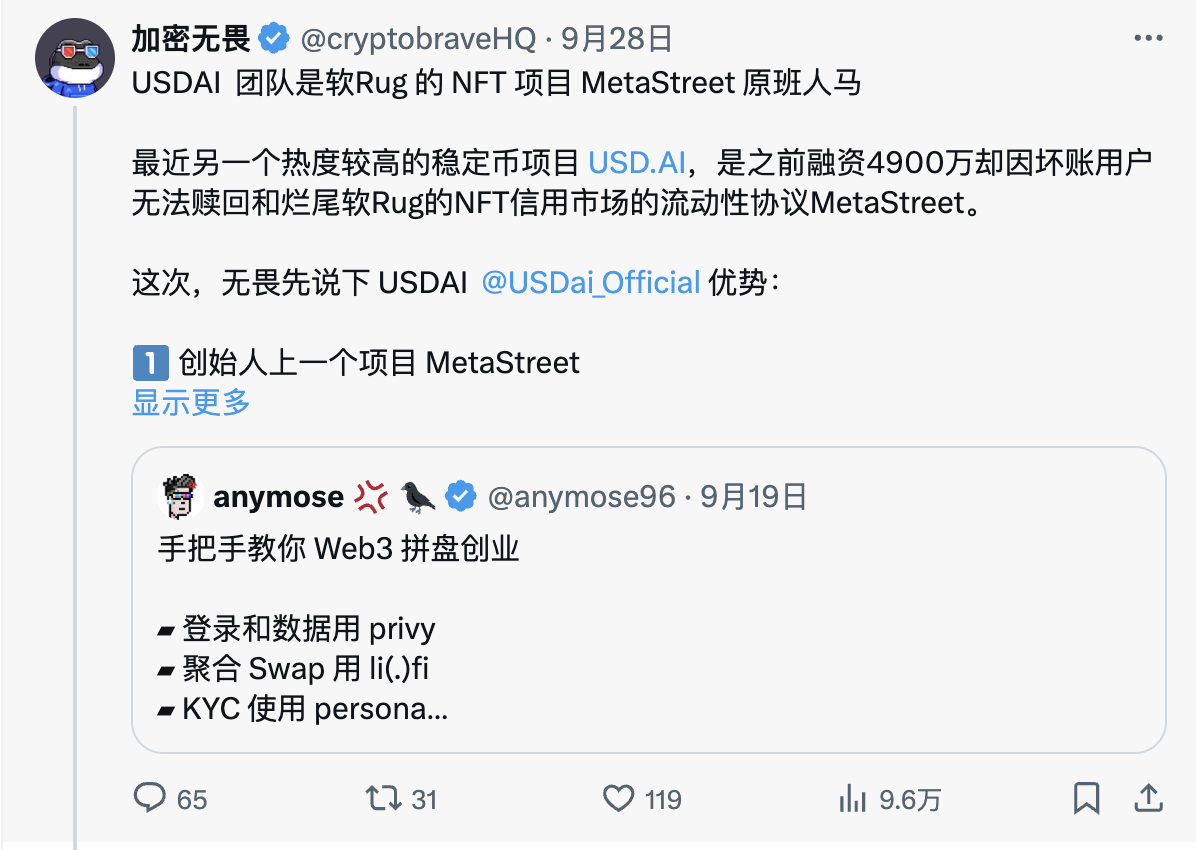Original | Odaily Planet Daily (@OdailyChina)

Following the rapid TGE of Plasma and Falcon, which created wealth myths with FDVs of over tens of billions and hundreds of billions respectively, funds have begun to seek the next potential high-yield "gold mine." With eye-catching labels such as "AI + stablecoin," "YZi Labs investment," "Plasma partner," and "500 million quota hard to come by," USD.AI has become the top choice for many users.
The Combination of AI and Stablecoins
USD.AI is positioned as a synthetic dollar stablecoin protocol aimed at providing funding for the physical infrastructure of artificial intelligence and other emerging fields.
On August 14, USD.AI announced the completion of a $13 million Series A financing round, led by Framework Ventures, with participation from Bullish, Dragonfly, Arbitrum, and others; subsequently, on August 26, YZi Labs announced an investment in USD.AI, with the specific amount not disclosed; then on August 28, USD.AI announced a partnership with Plasma, becoming one of the initial deployments on the first day of Plasma's mainnet launch.
According to USD.AI, the main channels for funding in the emerging AI industry still rely on traditional financial yield products, such as loans, bonds, and convertible preferred stocks. However, there is a significant gap between this financing model and market demand, so the protocol aims to build a financial layer tailored to the AI cycle to bridge this demand gap.
Specifically, USD.AI allows entities with financing needs to use the hardware itself as collateral for loans, restructuring the associated risks into standardized investable assets to earn returns — in simple terms, it will accept AI companies using graphics processing unit (GPU) hardware as collateral and issue loans to them, then distribute the loan returns to deposit pledge users.
The operation of the USD.AI protocol relies on three roles — first, depositors, who can obtain the stablecoin USDai through deposits and then stake it as sUSDai to earn protocol returns; second, borrowers, typically small and medium-sized AI companies that cannot meet their loan needs through traditional financing channels; and third, curators, a relatively special role primarily responsible for providing first-loss capital, earning corresponding premiums, and achieving risk isolation between capital and operational entities through tokenization.
As mentioned above, USD.AI currently offers two forms of stablecoin products: one is the fully collateralized stablecoin USDai, pegged to the dollar (which currently has a premium), and this stablecoin supports redemption at any time; the other is the staked version of the stablecoin sUSDai, which shares protocol returns (currently with a staking yield of 13.22%). The price of sUSDai will gradually increase with the accumulation of returns, and there is a 30-day time limit for unstaking.
Points Program — Choose Between IC0 or Airdrop
At the launch of USD.AI, a points (Allo™) program was introduced, clearly stating that the points would correspond to future IC0 (with an FDV valuation of $300 million) or airdrop rights, and the potential value expectation is a major reason for attracting users to the protocol.
However, it should be clarified that the rights corresponding to USD.AI's points can only be chosen between IC0 or airdrop — if you choose to use USDai to obtain points, it corresponds to IC0 rights (70% of tokens allocated in total), requiring KYC and capital subscription; if you choose to use sUSDai to obtain points, it corresponds to airdrop rights (30% of tokens allocated in total), requiring no KYC and no capital subscription.

USD.AI has made it clear that a single address cannot simultaneously obtain both IC0 and airdrop shares; the total allocation for users will be designated to either IC0 or airdrop based on the final points contribution value. If you want to have both, you must use two separate wallets to participate in the points activity.

As shown in the figure below, users can obtain points through USDai and sUSDai (including corresponding yield rates and points multipliers) as illustrated, where the left side corresponds to IC0 rights for USDai, and the right side corresponds to airdrop rights for sUSDai.

It is not difficult to see that whether it is USDai or sUSDai, currently, doing LP on Pendle or buying YT are the highest multipliers for points (note that only the SY part of LP counts), and doing LP also offers considerable annualized returns (42.21%, 36.59%) — however, you should not rush in right now, as the minting limit for USD.AI has been reached, and obtaining USDai can only be done by purchasing at a premium in the secondary market (approximately $1.03), making the entry cost too high for now; it might be better to wait for the next increase in the minting limit.
Is It Worth Mining?
As the popularity of USD.AI continues to rise, some FUD voices have emerged around the protocol, and the market's view of the protocol seems to have become quite divided.
Those optimistic about it believe that USD.AI combines two hot narratives: "stablecoin" and "AI," making it an excellent speculative target even without considering the fundamentals; additionally, the leading investor Framework has had excellent recent performance (also the lead investor for Plasma), and the expectations brought by YZi Labs for a Binance listing further elevate USD.AI's imaginative ceiling; moreover, the fact that USD.AI's previous increases in deposit limits were quickly snapped up also makes one think of Plasma.
On the other hand, those pessimistic argue that the lending model introduced by USD.AI has not been fully validated by the market, and using AI companies that cannot obtain sufficient financing through traditional channels as the main borrowers is actually a debuff; whether this mechanism can be effective and sustainable in the long term remains unknown; additionally, KOL "Crypto Brave" ([@cryptobraveHQ]) has revealed that the USD.AI team may be the same group that previously rugged the NFT project MetaStreet, which could indicate a problematic history…

In terms of personal operations, I deposited some funds in Pendle USDai LP after USD.AI launched in late August, but limited my position to a small percentage. I plan to consider buying some sUSDai YT with a different account when the price drops a bit more.
For users still interested in participating in USD.AI, I personally recommend operating around Pendle within a bearable risk range (even if just for the basic yield from LP, the APY is quite ideal), but I really do not recommend entering at a premium right now — unless you believe that the returns during this period before the next limit opening can cover nearly 3% of the loss. As for whether to choose USDai to participate in IC0 or to choose sUSDai for the airdrop, that is a matter of personal preference.
Additionally, for those interested in depositing, please consider using the invitation link; I appreciate it: https://app.usd.ai/i/vg59p
免责声明:本文章仅代表作者个人观点,不代表本平台的立场和观点。本文章仅供信息分享,不构成对任何人的任何投资建议。用户与作者之间的任何争议,与本平台无关。如网页中刊载的文章或图片涉及侵权,请提供相关的权利证明和身份证明发送邮件到support@aicoin.com,本平台相关工作人员将会进行核查。



